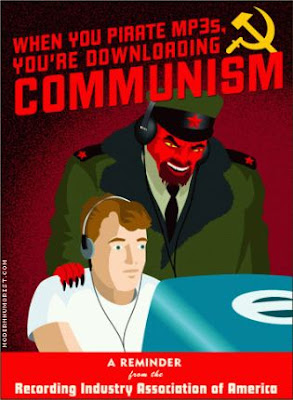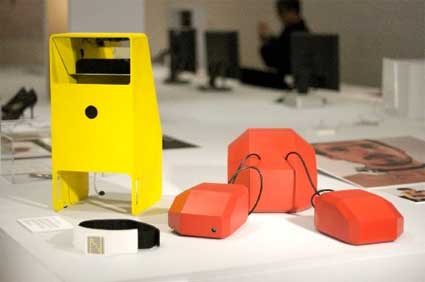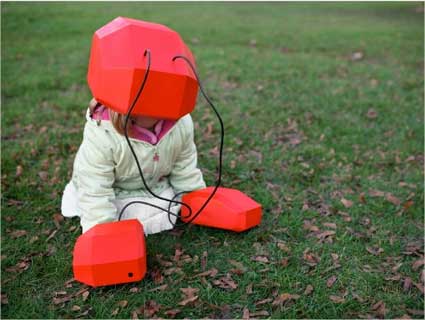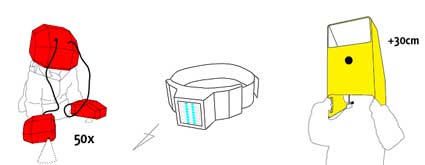Developers Against Piracy: Scream
Posted in: UncategorizedI know all your secrets.
Use of illegal software is shortest access to your computer. Only certified games guarantee information security.
Advertising Agency: Tabasco / JWT, Kiev, Ukraine
I know all your secrets.
Use of illegal software is shortest access to your computer. Only certified games guarantee information security.
Advertising Agency: Tabasco / JWT, Kiev, Ukraine
I know when you fall asleep.
Use of illegal software is shortest access to your computer. Only certified games guarantee information security.
Advertising Agency: Tabasco / JWT, Kiev, Ukraine
I know where you live.
Use of illegal software is shortest access to your computer. Only certified games guarantee information security.
Advertising Agency: Tabasco / JWT, Kiev, Ukraine
LONDON – Viewers can recall some TV ads even when they fast-forward through them at six times the speed of regular viewing, according to an NBC study which has identified what advertisers can do to beat ad skipping.
LONDON – The BBC is prepared to outbid ITV and BSkyB for the right to broadcast Champions League football, even though it may face having to placate the six main tournament sponsors.
LONDON – The first UK sponsor TV ads for the London 2012 Olympics will screen next week, when Scottish Widows debuts a 50-second spot incorporating athletes and gymnasts on ITV1.
Through this ad, WWF sought to actively involve people in the fight against global warming. So a pack of tree seeds was stuck to the page complete with planting instructions. Each tree planted absorbs a ton of carbon dioxide in its lifetime.
Advertising Agency: BBDO Guerrero Ortega, Manila, The Philippines
Executive Creative Director / Copywriter: David Guerrero
Creative Director / Art Director: Joel Limchoc
Producer: Al Salvador
Computer Artist: Manny Vailoces
Accounts: Karen Go
Electronic Arts is opening up its The Sims Online game to free membership, renaming it into EA-Land, and introducing a number of changes, the following one being the most interesting:
“In EA-Land, game data is available to the internet through web services so users can add gadgets to their Google pages to monitor the state of data they care about in game, for example, if a store is open.” (source)
There will be user-created assets and an economy, of course. And, likely, ads.
Deep under the layers of acquired historical meanings lies an often overlooked core of the economic theory that describes production of goods under public ownership, their free exchange, and their free consumption by all members of the society according to their needs.
This economic theory is communism, and the idea that Chris Anderson outlines in the latest Wired cover story and in his upcoming book is strikingly similar.
It is already remarkable how much vocabulary is shared between “socialism” and “social media”. One definition of socialism refers to a system under which “community members own all property, resources, and the means of production, and control the distribution of goods” (source), which also captures the spirit of economic relationships in most of the current social media environments. In his most recent book, The Long Tail, Anderson pays a fair amount of attention to those relationships, which are largely non-monetary in nature.
Anderson’s current argument is that under the rapid pace of modern technological progress, marginal production and distribution costs are trending towards zero (hence the article’s title “Free! Why $0.00 Is the Future of Business”) and so are the prices of goods and services.
The Wired article discusses those goods whose production and distribution is based on the rapidly cheapening web infrastructure, but in an earlier speech at last year’s Nokia World Anderson also touched upon an entirely different class of goods — the stuff you can touch, smell and sit on — and how 3D printing will drive the marginal costs of making the “real” merchandise also to zero (it’s around the 15th minute into the speech; Real Player).
(Long-time readers of this blog will remember a few thoughts on the role of advertising in the era of mass 3D printing.)
Anderson aptly called this new paradigm “freeconomics“, which, I guess, means the economics of communism without the political terror that accompanied nominally communist — but, in fact, barely socialist — regimes in the last century.
There are at least two answers to the question whether and how communism is compatible with capitalism. Marx would say that communism is the next logical step in civilization’s development that would replace capitalism (Marx would also add “violently”).
Much closer to Anderson’s are the ideas of Howard Sherman, a radical American economist who in conclusion to his 1969 paper “The Economics of Pure Communism” wrote:
“The economic arguments against communism were examined and found wanting. An economy of 70% or 80% free consumer goods seems possible–with little or no loss in perfotmance–in an easily foreseeable future. A gradual increase of the free goods sector, with careful attention to elasticities of demand, should make it possible to maintain equilibrium of supply and demand for all products, assuming present rates of productivity increase in the USA or USSR. Second, a gradual increase of free goods combined with continued wages to pay for the remaining priced (luxury) goods should present few new incentive problems. Third, with the use of accounting prices for free goods (derived from optimal programming processes), optimal planning can continue to function as well as under. socialism. Moreover, the planning can be centralized or decentralized as preferred, assuming the accounting prices are given to the managers as parameters. Finally, if economic performance is at least as good as in socialism, most of the arguments in favour of communism are non-economic–but these are beyond the scope of this article.”
Anderson concludes his article with “[…] a generation raised on the free Web is coming of age, and they will find entirely new ways to embrace waste, transforming the world in the process. Because free is what you want — and free, increasingly, is what you’re going to get.”
A quote from the original Manifesto would not be out of place here: “The feudal relations of property became no longer compatible with the already developed productive forces; they became so many fetters. They had to be burst asunder; they were burst asunder.”

The authors of this parody poster are not entirely inaccurate.
Hip Techies Dig Scene In West L.A.; Houses Google, Yahoo, MTV; The beachside enclave of Santa Monica is sort of the Silicon Valley of the south
BRIAN DEAGON — Investor’s Business Daily , February 25, 2008 Monday NATIONAL EDITION
Silicon Valley might have never come to be the technology capital of the world were it not for Frederick Terman getting tuberculosis.
Terman, considered the father of Silicon Valley, was intending to return to the Massachusetts Institute of Technology sometime around 1930 when a bout of tuberculosis caused him to stay at Stanford University, where he would later continue teaching.
He cajoled two of his students, William Hewlett and David Packard, to form a company, which they did in a place near the Palo Alto, Calif., campus, between San Jose and San Francisco and often considered the heart of Silicon Valley.
Terman also pioneered the creation of Stanford Research Park, where engineers would congregate. Such acorns became the foundation of Silicon Valley.
Building a tech community requires a concentration of companies, watering holes and organizations where people get to know the movers and shakers.
Something like that is occurring in west Los Angeles, anchored in the beachside city of Santa Monica. Among the largest employers in the 85,000 population city are Activision, MTV Networks, Symantec, Edmunds.com, Yahoo and Google.
Roots have also been planted by Time Warner’s AOL, Microsoft, HBO, Sony, Lionsgate Entertainment and News Corp.’s 20 th Century Fox.
According to the Santa Monica Business Directory, more than 140 tech companies have a business license from the city, an area of just eight square miles.
This does not include a bushel of tech firms just outside the city limits, many along Wilshire Boulevard, which runs into a shoreline overlooking the popular Santa Monica Pier. Electronic Arts occupies a two-story building six miles up the coast, with room for 600 people. Yahoo leased 256,000 square feet of space in a business complex that was renamed Yahoo Center.
The Santa Monica and west Los Angeles area appeals to 20- and 30-something creative types. The Mediterranean weather and beach scene aren’t the only draws. Santa Monica’s Main Street has lots of stores and restaurants. It has the open air Third Street Promenade and the upscale Montana Avenue.
“It’s a lifestyle choice,” said Michael Jones, a vice president of AOL and CEO of its Userplane.com unit. “While there are pockets of tech firms in Burbank, mid-Hollywood and parts of the San Fernando Valley, it’s really all about west Los Angeles and Santa Monica.”
According to Santa Monica’s Economic Development Division, technology firms are some of the area’s top employers. The city’s Web site says: “No discussion of the area would be complete without mentioning the tremendous influx in recent years of entertainment, high-tech and software companies.”
Evidence of the influx is shown in commercial rental properties. Nondescript industrial buildings fetch monthly leases of $5 a square foot per month, on par with high-rise office building rents.
“We see a lot of digital activity on the west side,” said Jack Kyser, chief economist of the Los Angeles Council Economic Development Corporation.
As with all successful tech centers, the area is burbling with professional networking groups.
When Dealmaker Media, a well-known networking group in Silicon Valley, held its premier event in the area, it chose Santa Monica as its location, across the street from the Yahoo Center and next to MTV.
TwiistUp, also new to L.A., has held three events in nearby Venice.
“It’s happening because there is a critical mass of tech people on the west side,” said Benjamin Kuo, founder of SoCalTech.com, which chronicles L.A. tech activity. “A lot more events are going on, with more people getting involved.”
Animals have senses beyond human experience, they instinctively feel approaching tsunamis through low frequencies, communicate through pheromones or can navigate through magnetic fields.

Students of Design Interactions Chris Woebken and Kenichi Okada, in collaboration with MBA students from the Oxford Said Business-school, have been developing a series of sensory enhancements toys for children to experience “animal superpowers.” Each prototype allows the kid to change perspective or feel empathy with animals.

At the work in progress show of the Royal College of Art in London a few weeks ago there were showing 3 of their prototypes:

The ground as seen through the “Ant” apparatus
Ant – feeling like an ant magnifying your vision 50x through microscope antennas on your hands
Bird – gaining a sense for magnetic fields
Giraffe – a child to adult converter changing your voice & perspective
They are also developing Elephant shoes that pick up transmitting vibrations from fellows and a head mounted Theremin (!) to provide children with an enhanced spatial vision similar to the one of an electric Eel.
I played with the ant and giraffe devices while visiting the RCA show and found out that the objects do exactly what their description says: i felt humbled by the ant devices (i could not see anything of what was around me but could perceive all the tiny cracks and details on the surface of of the table i was exploring) and while doning the giraffe helmet i could only perceive the head of the tallest people in the room. Anyway, time for a few questions to Kenichi and Chris:

How does the Bird device work?
K&C: Birds find direction through sensing geomagnetic fields to find their way migrating from their summer territory to where they are spending the winter months.
Rather than translating the sense of geomagnetic fields literally, we designed a device that can be set to basic children’s needs sensing the direction of home, icecream-shops or your friends.
Tiny motors in the device create a haptic sensation on the skin when you tune into the direction and create a new relationship to your environment. It not just creates a haptic sensation for yourself but as part of the superheros it also displays the direction and visualizes it to your friends.
 Which technique did you use to change the voice in the giraffe helmet?
Which technique did you use to change the voice in the giraffe helmet?
K&C: We are using a telephone voice changer to make a kids voice sound like an adult.
Has working on this project taught you something you were not expecting about body perception and possible future body extensions?
K&C: All the devices in this series are working experiential prototypes so we could test the devices with kids. We were quite surprised how extreme the ant device changes the children’s behaviors. Even a hyperactive kid moves very slow because the new 50x scale makes you feel sick if you would move at normal speed.
We are interested in perception and sensory enhancements for the body and we are also considering a series of toys that uses bio-sensors and can tune into biochemical animal communication.
C: The animal project inspired me to explore new ways of interacting with our instinctual animal-self, taking it from the toy level to an adult training tool. Our senses evolved to operate in a networked information age and the sense of smell for example is currently degenerated because we have fire-alarms. Evolutionary our emotions are still controlled with the reptile part of our brain. I am exploring how networked technology and human augmentation training tools can create a new awareness, augment instincts and train new reflexes and for today’s survival.
Thanks Chris and Kenichi!

Images by Chris Woebken.
UPDATE:
 Jim Rokos just told me about a low-tech device that, although it does not enhance our sensory range like the Animal Superpowers project, alters a user’s perception of the space (in this case Kensington Gardens in London) by giving the sensation of being a rabbit.
Jim Rokos just told me about a low-tech device that, although it does not enhance our sensory range like the Animal Superpowers project, alters a user’s perception of the space (in this case Kensington Gardens in London) by giving the sensation of being a rabbit.
Designed by Rokos in collaboration with in collaboration with Kathrin Bohm and Andreas Lang, the object lowered your vision to ground level, and outwards, by the use of periscopes. The device was set off centre on a wheel to create the sensation of hopping.
The device comes with ears and a tail, so that onlookers can also understand the product’s purpose.
LONDON – The company’s unsuccessful bid for Northern Rock has left it cast in a favourable light with consumers.
LONDON – Delta Air Lines, the US transatlantic carrier, has handed its $50m (£25m) global integrated advertising account to Digitas amid plans to step up its international marketing.
LONDON – Pepsi has revealed it plans to expand Pepsi Raw, its nascent premium cola brand made from natural ingredients.
LONDON – Facebook has suffered its first decline in UK user numbers for 18 months, suggesting that the social networking craze has peaked before advertisers have had chance to cash in on consumer interest.
LONDON – Coca-Cola Enterprises and Kellogg are to experiment with ‘buzz marketing’. The approach, also known as word-of-mouth marketing, involves techniques that can range from employing actors to extol the virtues of products in bars, to more structured campaigns.
LONDON – UK supermarkets are shifting away from celebrity-backed marketing strategies toward price promotions, ahead of an expected slowdown in consumer spending.
LONDON – Coca-Cola is extending its Zero label to the £200m-a-year sports drink market with the launch of Powerade Zero.